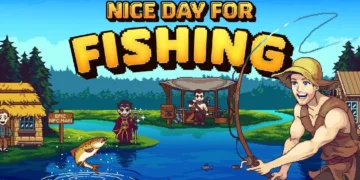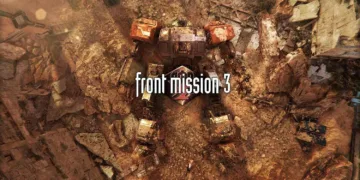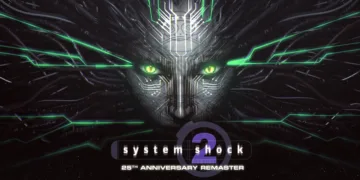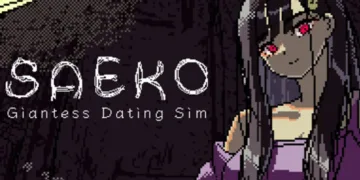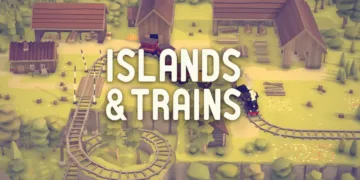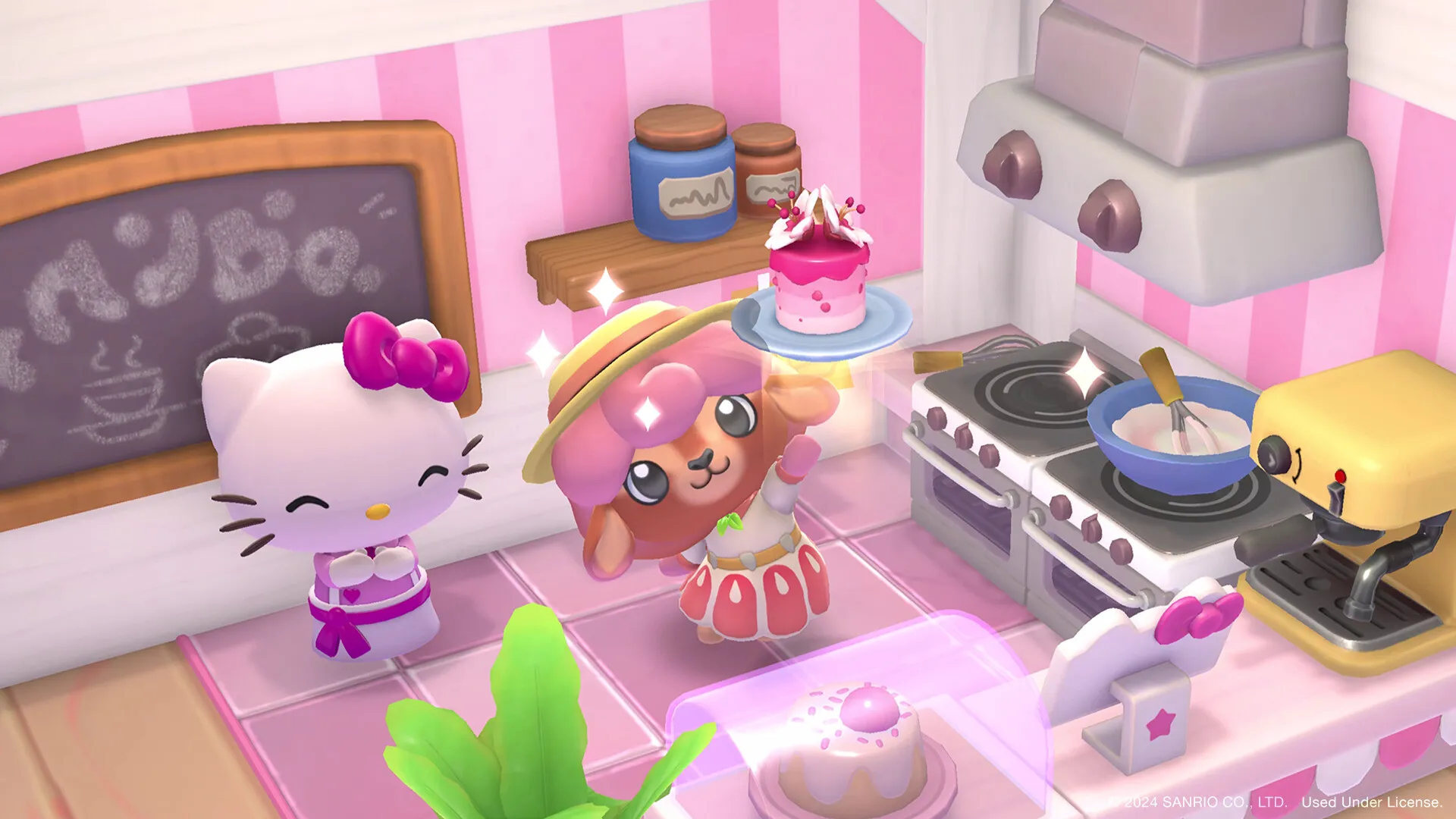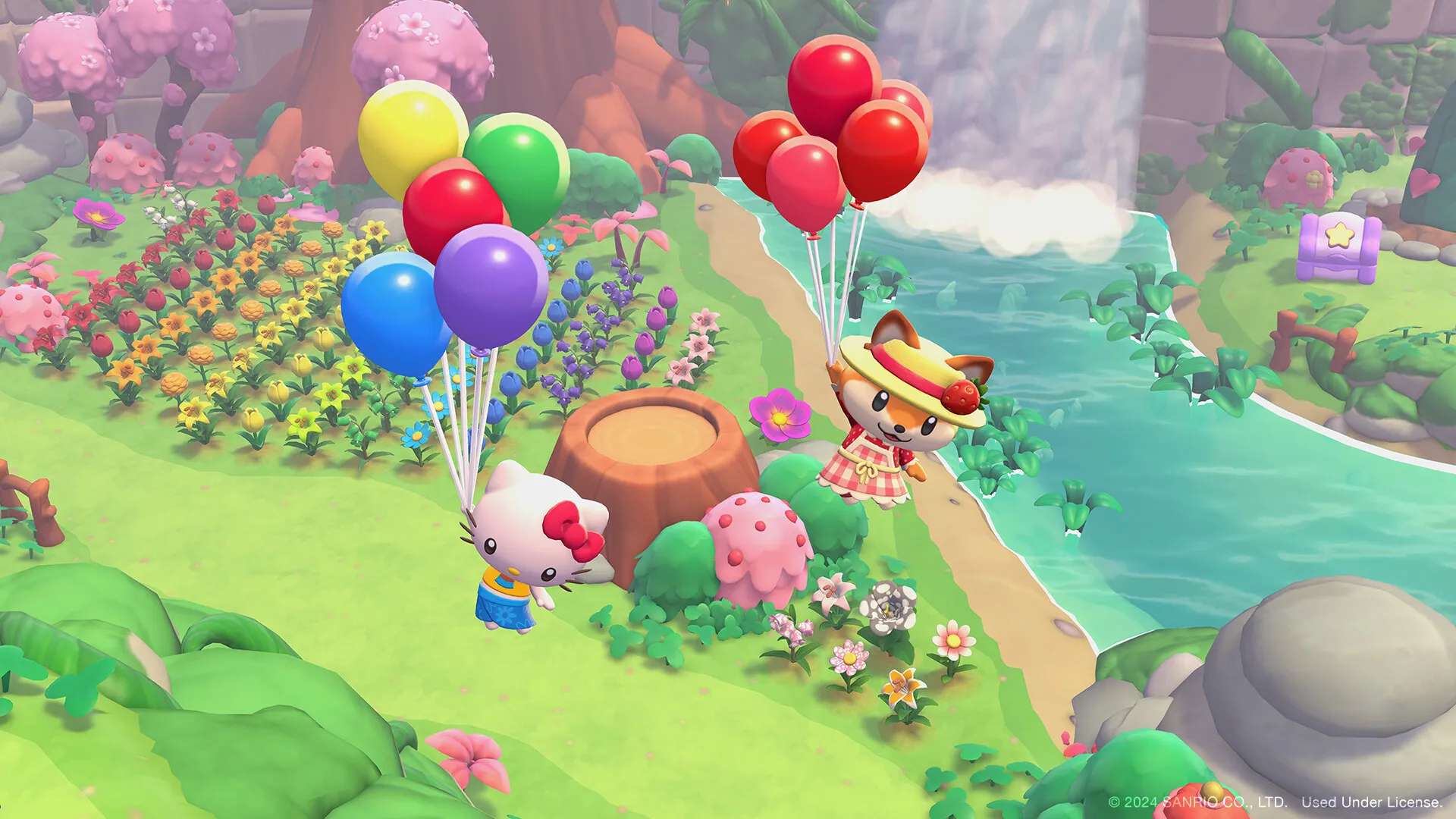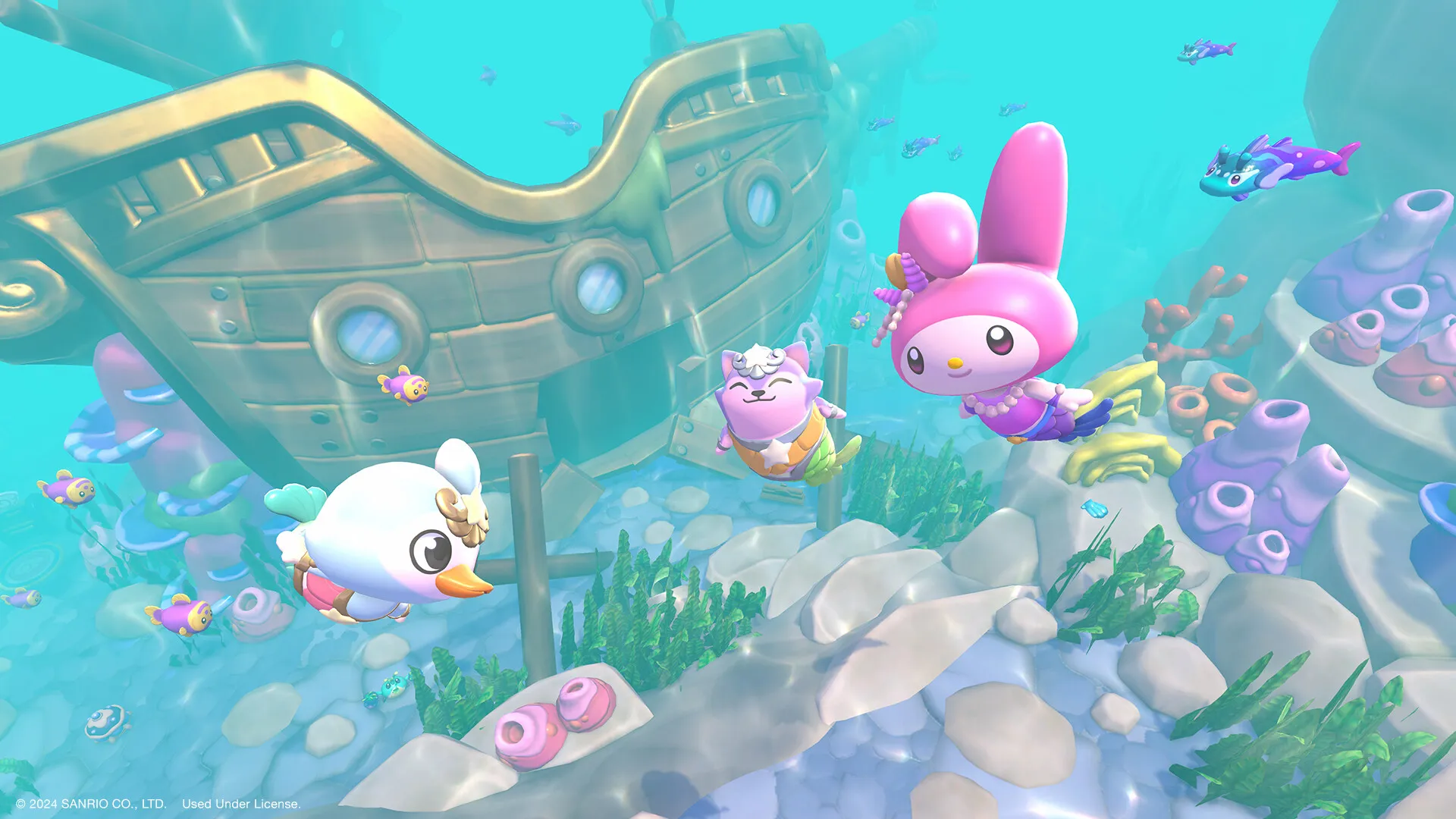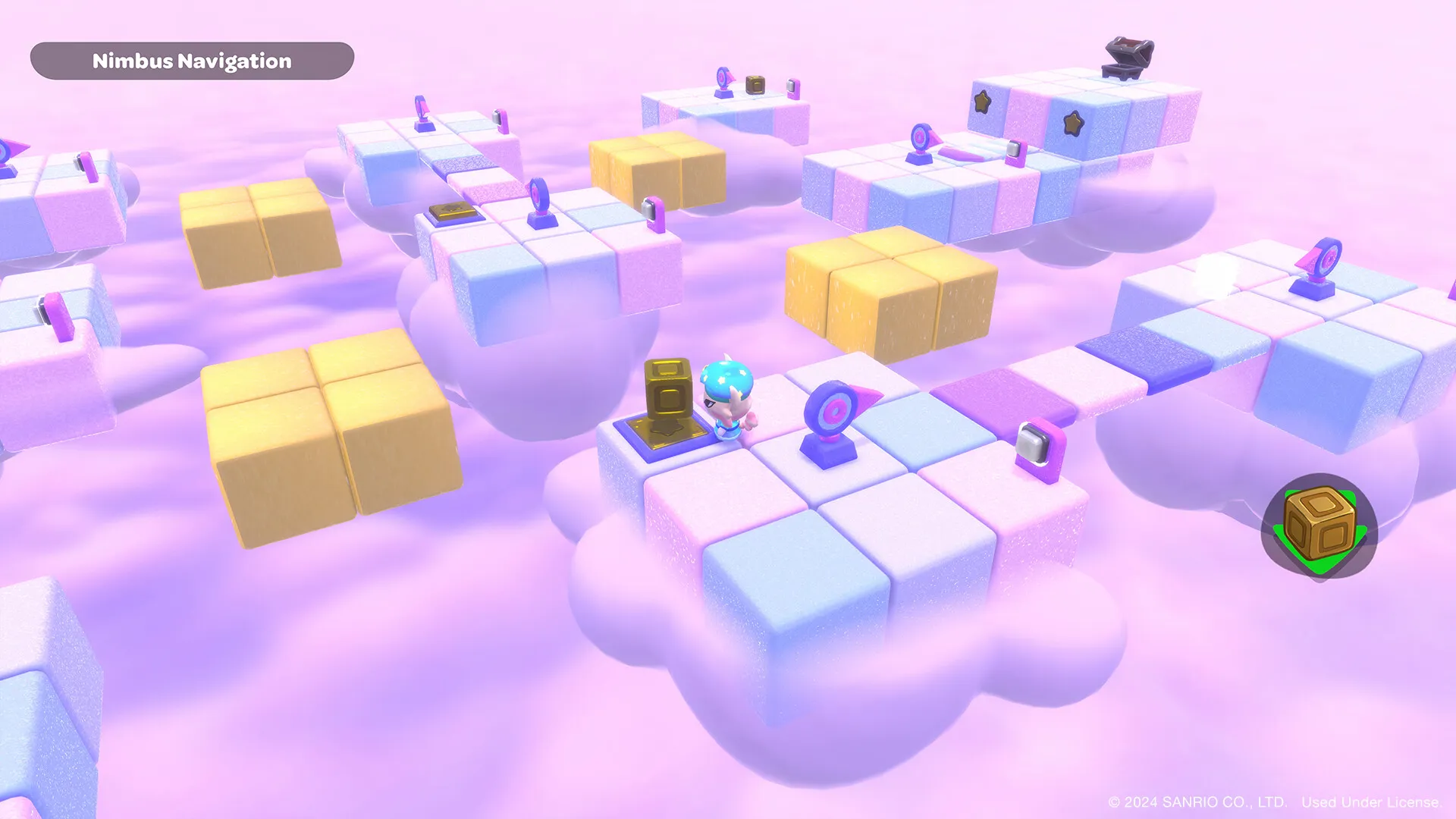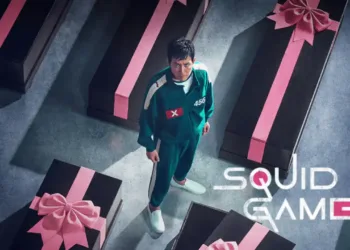From the first moments, the game presents an island resort bursting with colorful landscapes and a playful spirit. The setting features lush palm groves, bright sandy beaches, and hidden nooks that invite exploration. The introduction grabs attention with an unexpected scene—a plane in disarray and characters descending with helium balloons. This unusual start mixes absurd humor with a sense of carefree adventure, drawing players into an environment that feels both lighthearted and full of surprises.
The narrative centers on reuniting a group of scattered characters, each with its own distinct personality. Tasks are designed around finding these missing friends while gradually uncovering the island’s understated mysteries.
The story unfolds through a series of quests that reveal small, charming details about the island’s past and the lives of its quirky inhabitants. The dialogue carries a casual tone, echoing the gentle humor and warmth associated with Sanrio characters, and it manages to keep interactions fresh throughout the early stages of the game.
Quests serve a dual role by advancing both the plot and gameplay. They provide clear objectives while introducing elements of resource gathering and puzzle solving that feel familiar to fans of other island resort simulations. The experience is reminiscent of other titles within the genre, yet the playful introduction and emphasis on social connections give it a distinct personality that sets it apart.
Game Mechanics and Systems: An In-Depth Look
The game centers around a core loop that involves gathering resources to craft gifts and using those gifts to build stronger connections with the island residents. Players collect various materials while exploring the island, which they then combine to produce items that suit each character’s preferences. These gifts raise friendship levels, unlocking fresh tasks and perks such as new quests and enhanced abilities for companions.
A strict daily gift cap means each gift must be chosen with care, influencing the pace of progression and forcing players to make strategic decisions about which characters to prioritize. This system bears similarities to mechanics seen in other simulation titles, where resource management plays a key role in developing relationships.
The quest system further drives both the narrative and gameplay progression. There are multiple types of quests available, including overarching story missions, secondary tasks, and repeatable daily assignments. Each quest is designed to introduce small elements of the island’s lore and the personal stories of its quirky residents. The crafting system interlocks with these quests; as players refine their gift-making skills, they gain access to higher-level friendship tiers that open up additional story content and challenges.
Players can craft everything from simple food items to decorative pieces and even specialized gifts that cater to a character’s unique tastes. This interconnection between crafting and quest progression creates a system where each action feels tied to both immediate benefits and long-term rewards.
Balancing active play with resource management is a deliberate choice in the game’s design. As players roam the island, they must keep an eye on their supplies, knowing that the real-time clock imposes limits that encourage regular play. This structure creates a rhythm in gameplay that rewards steady participation, ensuring that progress is measured and methodical. The pacing may test the patience of those accustomed to faster rewards, but it also provides a steady sense of achievement for dedicated players.
Exploration and World Design: In-Depth Analysis
The game presents an expansive island where every region feels distinct and inviting. Players encounter areas such as sunlit beaches, murky swamps, arid deserts, and even volcanic landscapes that introduce an element of risk. Hidden dungeons tucked away in remote parts of the map add extra layers of discovery, giving the world a textured feel.
Each environment is carefully crafted, with visual details that reflect its nature—crisp, clear skies above the tropical shores and smoldering hues near the volcanic zones. This assortment of settings not only delights the eyes but also sets up varied challenges that keep the exploration experience fresh.
Exploration is supported by a range of interactive mechanics. The game allows for scaling rocky cliffs to reveal new vistas, using helium balloons to drift between isolated locations, and diving into underwater sections managed by a stamina system. These methods create a dynamic system of discovery, where players might uncover secret quests or stumble upon puzzles hidden behind natural barriers.
This design approach reminds one of other simulation titles that emphasize environmental interaction, yet the balloon gliding stands out as a creative twist that adds both fun and strategy. Hidden paths and extra rewards often lie just beyond the obvious trail, inviting players to investigate every corner of the island.
Time plays a significant role in shaping the exploration experience. The game incorporates a real-time clock that influences elements like day and night cycles, alters shop inventories, and limits the number of gifts that can be exchanged daily. This structure introduces an element of planning into each session, as the state of the world shifts with the passing hours.
Players must consider these changes when planning their activities, as certain rewards or areas may only be available at specific times. The blend of time-sensitive mechanics with environmental discovery creates a layered experience that challenges players to plan and experiment with different approaches as they uncover the island’s secrets.
Character Customization and NPC Interactions: A Closer Look
The game begins by inviting players to craft their own Sanrio animal avatar. During character creation, one can choose from various animal types, such as bunnies, birds, and sheep, along with an array of color options that brighten the experience.
Clothing and accessory choices add an extra dimension of personalization, allowing players to experiment with styles that fit a playful and imaginative theme. This system provides a hands-on opportunity to express creativity and adds a light, enjoyable start to the overall experience.
Interactions with the island’s residents play a significant role in shaping the gameplay. Each character presents its own distinct personality and set of interests. For instance, some characters may offer tasks related to gathering materials or require specific crafted gifts, while others provide assistance during mini-games. The exchange of gifts remains a central feature, with the act of presenting carefully prepared items fostering deeper bonds. The dialogue is kept simple and cheerful, ensuring that every interaction contributes to the evolving relationships between the player and the island inhabitants.
A further layer of engagement is introduced through the visitor cabin system. Visitors from the Sanrio universe arrive on the island, and players have the option to prepare cabins that reflect the personality of each guest. These visitors are not merely decorative; they supply practical benefits such as enhanced resource gathering and bonus skills during various challenges. The interplay between customization, gifting, and the benefits provided by companions creates a cohesive network of interactions that enriches the player’s experience without overwhelming the core mechanics.
Activities, Mini-Games, and Personalization: A Detailed Analysis
The game offers a range of mini-games that interrupt the routine of gifting and questing while supplying useful rewards. The fishing mini-game presents a twist on balancing mechanics, requiring precise control of an on-screen marker to secure a catch.
Bug catching introduces a series of imaginatively designed critters, prompting players to search various island areas for rare specimens. Cooking challenges demand that players gather ingredients scattered around the environment to create dishes that can be used to advance other systems. These diverse activities serve as enjoyable pauses that enrich the overall experience without straying from the central gameplay loop.
The home decoration and furniture crafting system further extends the game’s appeal by allowing players to customize both their personal dwellings and island structures. Players craft a range of furniture and decorative items, from modest chairs to thematic accents that reflect the island’s distinct style.
While the decor options remain true to the established aesthetic, some players may find the predetermined themes somewhat limiting when experimenting with personal style. Nonetheless, the variety available permits a fair degree of personalization and creates spaces that mirror individual taste.
Seasonal festivals and special events also play a significant role. These events introduce unique themes with limited-time collectibles and special quests that appear for a short period. Hidden characters and secret items are often part of these celebrations, inviting players to explore every corner of the island in search of surprises.
Visuals, Sound, and Technical Performance: A Detailed Examination
The game transforms Sanrio’s familiar style into a three-dimensional world that remains true to the original charm. Characters are designed with careful attention to detail, preserving the signature look of each beloved figure while adding depth and subtle shading that enhances their appeal.
The environments benefit from a warm and inviting color scheme, with meticulously rendered backgrounds and special effects that lend softness to the overall presentation. Each area, from the playful urban corners to the more natural island settings, contributes to a cohesive visual identity that resonates well with fans of the franchise.
Sound design also plays a significant role in crafting the game’s atmosphere. The musical score is light and melodic, fitting the mood of the various settings and matching the pace of gameplay. Sound effects accentuate player actions, providing immediate feedback during interactions and mini-games. These auditory cues complement the visual experience, ensuring that moments of action and quiet exploration are both engaging and satisfying.
Technical performance stands up to scrutiny across multiple platforms, including mobile, Nintendo Switch, and PC. Load times are brief, and transitions between areas occur smoothly without noticeable delays. The user interface presents clear font sizes and logically arranged buttons, making it simple to manage various tasks.
Camera controls function reliably, although there are occasional minor glitches when too many dynamic elements appear simultaneously. Such technical considerations support the game’s expansive exploration and scheduled progression, allowing for extended sessions without interruption.
The Review
Hello Kitty Island Adventure
Charming yet measured in its pacing, the game presents a colorful island world with engaging character interactions and an appealing art style that resonates with fans of cozy simulation. The gifting system and mini-games provide steady rewards, although the repetitive progression may test players who crave constant variety. The detailed design of its 3D environments and thoughtful audio create a satisfying experience across platforms. Fans of the genre will appreciate the deliberate rhythm, even if its slower pace is not for everyone.
PROS
- Charming and detailed island setting
- Engaging character interactions with a nostalgic appeal
- Creative mini-games that offer refreshing breaks
CONS
- Progression can feel slow due to daily limitations
- Gift exchanges may become repetitive over time
- Customization options might seem limited for some
































